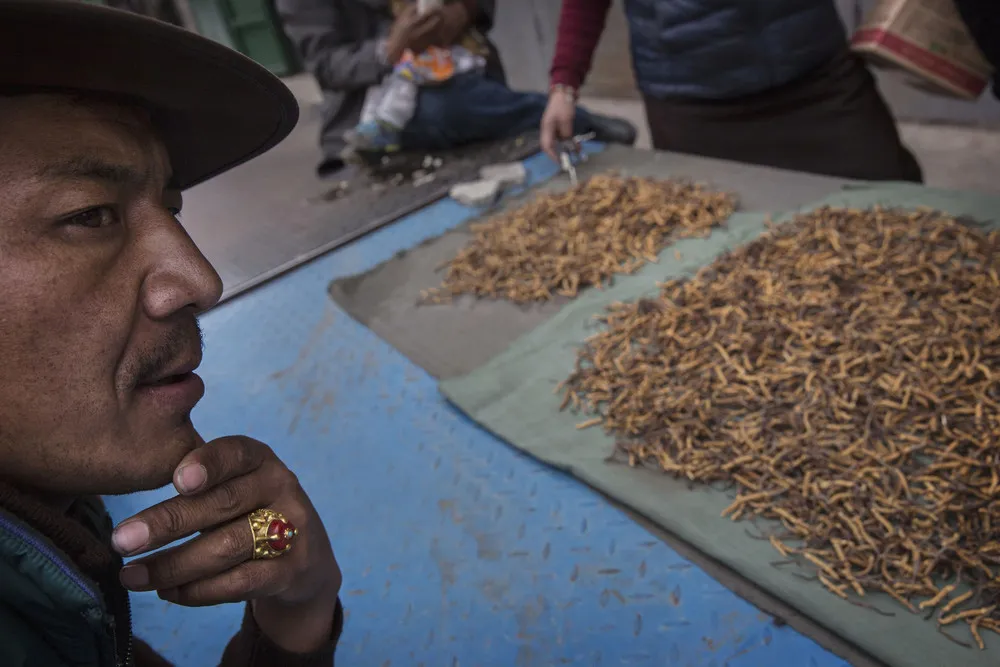|
Tibetan nomads examine cordycep fungus for sale at a market on May 22, 2016 on the Tibetan Plateau in Yushu town in the Yushu Tibetan Autonomous Prefecture of Qinghai province. The Tibetan Plateau is home to the cordyceps fungus, also known as caterpillar fungus, is a parasitic spore that thrives in high altitude, low temperature conditions on the Tibetan plateau. While not historically a part of Tibetan culture, cordyceps are a prized ingredient of traditional Asian medicinal treatments that purportedly heal ailments ranging from asthma to impotence to cancer. Demand in China alone has created a booming economy for what Tibetans call yartsa gunbu, or summer grass, winter worm, which sells for up to $50,000 US per pound. As the state-supported cordyceps industry has developed, Tibetans who rely primarily on farming and herding have turned to the weeks-long harvest as a means of earning income to last through the year. The annual gold rush has transformed parts of rural Tibetan areas, generating about 40% of the local economy. However, environmentalists increasingly warn that over-harvesting of cordyceps carries the cost of degradation to mountain grasslands that are essential for yak and cattle grazing. Due to below average rainfall the 2016 harvest is expected to be the lowest on record with many harvesters reporting yields way lower then expectations. (Photo by Kevin Frayer/Getty Images)
|

